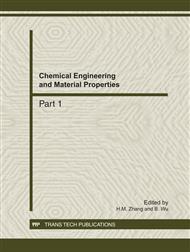p.467
p.474
p.479
p.484
p.488
p.493
p.497
p.501
p.505
Prediction of the Average Diameter of Laser Ablated Silver Nanoparticles Colloid Based on Artificial Neural Networks
Abstract:
In order to shorten the fussy experimental process in preparing colloidal solutions of silver nanoparticles by pulsed laser ablation in distilled water, a LmNet PF neural network model is developed to approach the complex nonlinear relationship between technology parameters and the average diameter for preparing colloidal solutions of silver nanoparticles. By using the constructed neural network model, the relationship between the technology parameters ( laser fluence, laser repetition, ablation time) and the average diameter is discussed, and the weakness that the nonlinear relationship could not be approached more accurately, effectively by using single-factor-experiment method is overcome. Predicted and test results showed that all the relative errors between the desired values and predicted outputs of the network are less than 10 %, but the predicted data of the neural network model are well acceptable when comparing them to the real test values, hence providing an effective, economical way for preparing colloidal solutions of silver nanopartilces.
Info:
Periodical:
Pages:
488-492
Citation:
Online since:
December 2011
Authors:
Price:
Сopyright:
© 2012 Trans Tech Publications Ltd. All Rights Reserved
Share:
Citation:


